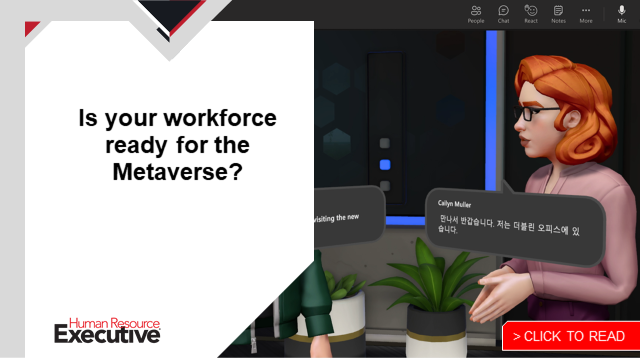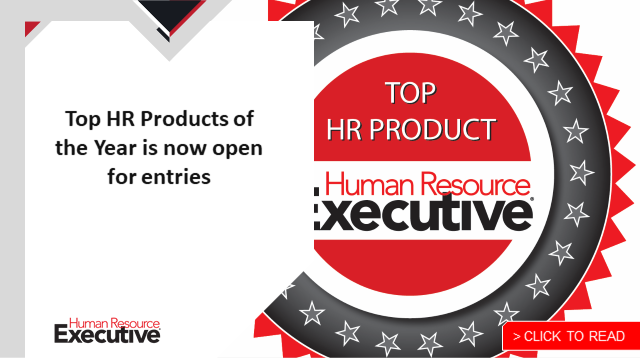We are fully into spring in the United States, and in addition to increased sunshine and warmer weather, springtime means something else to me: the start of Top HR Products season! OK, I know this might sound a little weird, but for the last several years (closing in on 10, I think), I have spent a decent chunk of the spring and summer reviewing and taking demonstrations of the latest innovations in HR and workplace technology.
Initially, it was for the popular “Awesome New Technologies for HR” sessions at the HR Technology Conference. In recent years, it’s been as part of naming the Top HR Products of the Year, co-presented by Human Resource Executive® and the conference. As I think about the many years of taking these demos, I wish I had kept count of just how many I’ve done. It’s certainly in the many hundreds and probably closer to a thousand or two at this point.
Regardless of the exact number, I have learned a few things about new HR technology over the years, so this month I am sharing a few observations and bits of advice for any HR leaders who are evaluating and considering new HR technologies for their organizations. I believe the time I’ve spent and the things I’ve learned can help you make better, more informed decisions. Here are three considerations.
This solves a problem. Is it my problem?
 You can call this “Shiny Object Syndrome.” And perhaps you think this is not really a problem, considering that real companies spend real budget on HR technology and are not likely to do that carelessly. But I still think that chasing the latest innovation in HR technology can get organizations into trouble.
You can call this “Shiny Object Syndrome.” And perhaps you think this is not really a problem, considering that real companies spend real budget on HR technology and are not likely to do that carelessly. But I still think that chasing the latest innovation in HR technology can get organizations into trouble.
Related: 4 reasons HR tech projects fail. How to succeed instead
Let’s be clear: With all the providers in the market, you could probably spend unlimited money acquiring the latest, best and most interesting new HR technology. But the challenge for HR leaders and organizations is to carefully evaluate the emerging HR technology solutions against their business challenges and requirements. It can be easy to get excited about a new technology that can help you in one area. But if your organizational challenges are in a different area, no matter how powerful the new HR technology is, its impact on your organization will be limited.
So before you consider adopting and implementing any new solution, make sure you have identified the top three HR and business challenges you need to respond to and then assess whether any new HR technology solutions will help you address these challenges.
This is not a product; this is a feature.
This is one of the more common situations you will encounter. There has been so much innovation and interest in HR and workplace technology that hundreds of new, startup companies emerge every year. Often, as is the nature of new companies, these new solutions focus on an extremely specific use case. It could be lightweight employee sentiment surveys delivered on mobile devices, a tool to examine job advertisement copy for non-inclusive language, or a bolt-on solution to allow employees to access earned pay outside of the usual payroll processing schedule.
Related: Buying HR technology? Start at the top of the stack
 The commonality of these tools, if they’re really good ideas, is that they tend not to last as independent solutions. Two things typically happen: The companies get acquired by larger HR technology providers or the larger providers simply build similar capabilities and features into their existing HR suites. So, my advice, especially if you are a customer of one of the larger, more established HR providers, is to assess whether the “new” capabilities on offer from a new HR technology provider will soon be incorporated into your existing tools, eliminating the need to contract with and implement new solutions.
The commonality of these tools, if they’re really good ideas, is that they tend not to last as independent solutions. Two things typically happen: The companies get acquired by larger HR technology providers or the larger providers simply build similar capabilities and features into their existing HR suites. So, my advice, especially if you are a customer of one of the larger, more established HR providers, is to assess whether the “new” capabilities on offer from a new HR technology provider will soon be incorporated into your existing tools, eliminating the need to contract with and implement new solutions.
Is this new? Or is this what we always had in a new package?
This phenomenon is mostly one I have seen from the larger, more established HR technology providers. Periodically, providers take some time to refresh their look, feel and what they often call their “user experience.” While this makes sense, especially for solutions that are mature and have been in the market for some time, it also makes sense for users to study what they’re getting. Is it simply a new look on existing technology or a new look plus incremental improvements in the technology itself?
Often, development work to provide a new user experience is separate from work to innovate and advance software capabilities. That can be fine: I can attest that reconfiguring the user experience in a large, enterprise technology is incredibly complex so providers often try to reduce that complexity by including a small number of new capabilities. But for you, the user of these technologies, be mindful that a new user interface and user experience refresh sometimes offers only limited benefits to the organization. So, on this point, I advise you to ask lots of questions and push back when your existing HR technology provider impresses upon you the need to adopt their latest and newest release. Make sure it provides more for you and your employees than better icons and prettier colors.
Overall, there has never been a more interesting and innovative period in the history of HR technology. Between the technology itself advancing in capability, the flood of new investments and capital powering the space, and the still-extremely competitive market, there is more and better HR technology available now than at any other time in history. And there is no shortage of HR technology companies eager to sell you their latest and greatest. Good luck as you work to keep things in perspective, focus on the important factors, and make the best decisions for your organization and your employees.
The post 3 lessons for HR leaders from my years of reviewing Top Products appeared first on HR Executive.